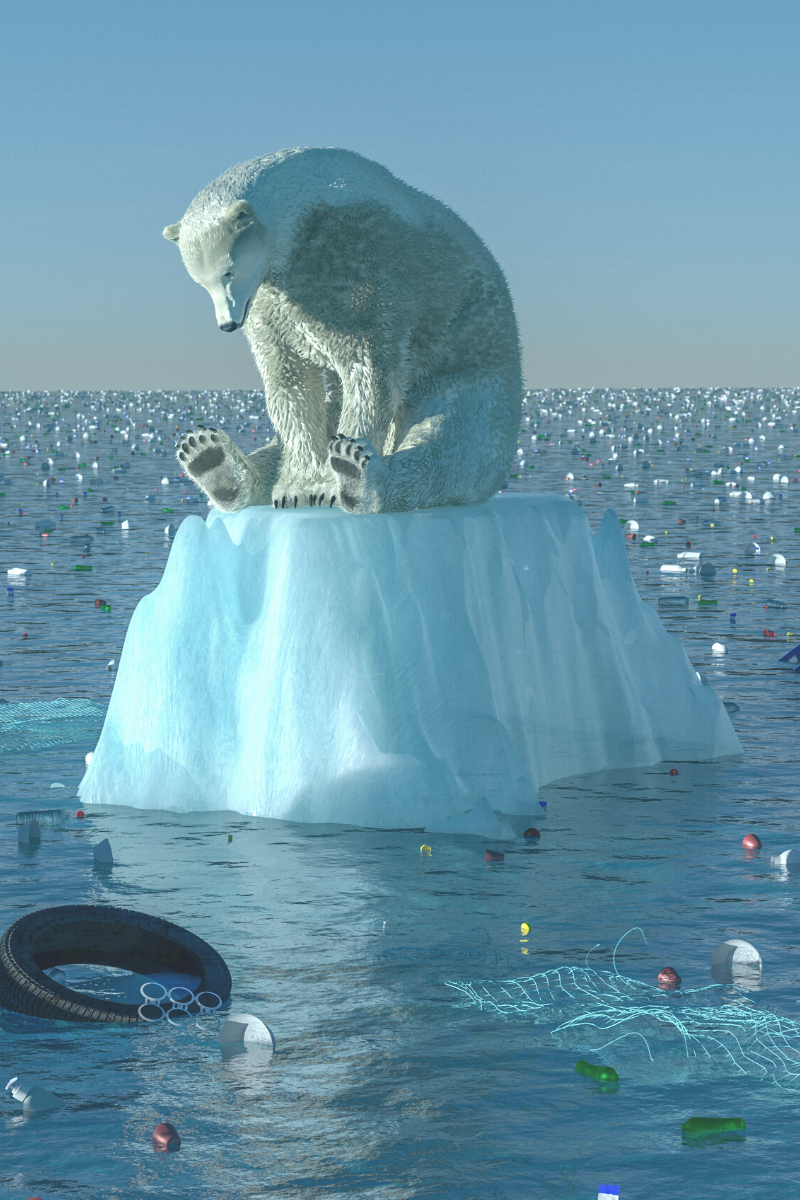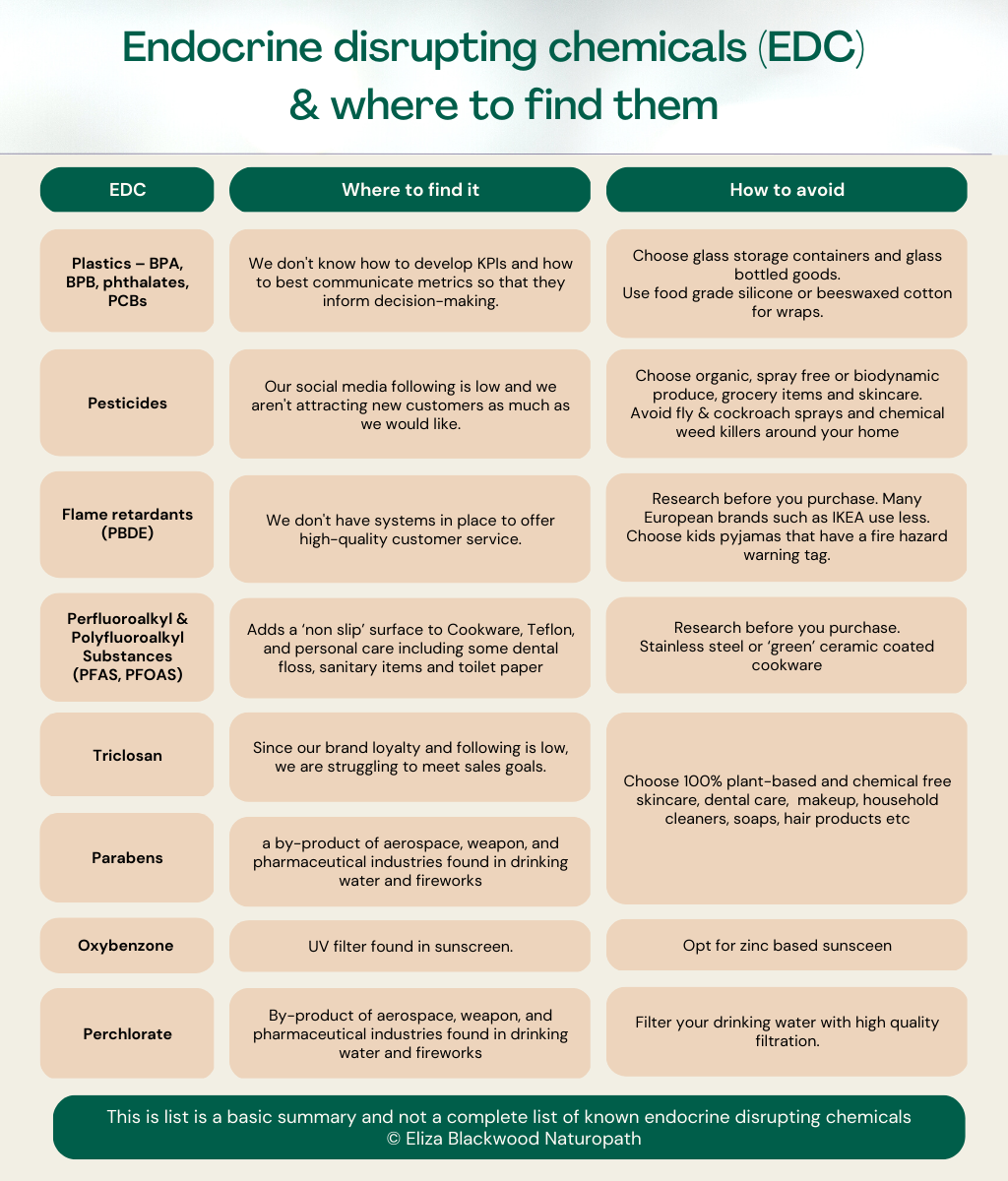
Endocrine disruptors – Hormone changing chemicals that are more prolific than you think
Endocrine disruptors –
Hormone changing chemicals that are more prolific than you think
Back in 2006 I read quite a shocking article that discussed hermaphrodite polar bears (both male and female reproductive genitalia) discovered in the Arctic.
At this time, wildlife researchers found that 1 in 50 polar bears in Norway's Svalbard islands are affected and the phenomenon is being linked to the effects of pollution.
More specifically, the chemical of focus in this article is called polybrominated diphenyls, or PBDEs, which have been found deposited in polar bears fatty tissues. PBDEs are flame retardants commonly found in furnishings, clothing, vehicles and plastics. They are considered carcinogenic, estrogen disrupting and thyrotoxic (toxic to thyroid function).
This article states: “studies are still being carried out on what impact the chemicals might be having on the bears, but tests on laboratory animals such as mice indicate that their effects can be considerable, attacking the sex and thyroid glands, motor skills and brain function.”
Researchers were sounding the alarm at the levels of toxic chemicals in the artic basin. This cold and desolate place is supposed to be the purest and most untainted by humans.
If polar bears in the Arctic are affected, then we all are.
Studies have also shown that traces of PBDEs are found in human blood and breast milk, and this is just one many types of endocrine disrupting chemicals (EDC).
Fast forward to 2023 there is more and more research on EDC. The number of different types of EDC could well be up in the 1000’s and have been found in just about every human fluid including placental cord blood and cerebrospinal fluid.
These days awareness of endocrine disruptors and other problematic chemicals has increased but despairingly, these toxins are still vastly unregulated and ignored. This is why it is important that we educate ourselves about these and other toxic, health deleterious, chemicals so we can protect ourselves and our families.
In an era where there is huge concern about climate change, I feel that the lesser known threat of dangerously rising chemical toxicity in our environment needs just as much focus. We know that EDC’s and other environmental toxins have a huge impact on fertility, cancer, and other health conditions. Many of these chemicals are consider ‘forever chemicals’ because they don’t break down or accumulate and persist in the environment such as PFOA’s and triclosan.
In an article from 2016, that I highly recommend reading, regulation of endocrine disruptors and other toxic chemicals are discussed. The Author outlines how Australia’s regulators continue to turn a blind-eye to these issues of toxicity of commonly used chemicals and states:
“The denial of harm and lack of adequate assessment continues in the industrial chemical arena, where assessment is even less rigorous”
I discuss endocrine disruptive chemicals and how to minimise exposure with all my fertility clients, both male and female, and clients with
other hormone dependant issues. The reality is though, these EDC harm us all.
Reducing exposure is an important step:

What else can you do?
If you are concerned you have an exposure to a toxic chemical, it can be test for. Talk to me about your concerns and go through testing options. Supporting your systems of detoxification is essential to help your body clear toxicity effectively. Detoxification is a whole-body process with the digestive system, liver, kidneys and lymphatic system all playing key roles. Effectively supporting or actively stimulating detoxification in our body is holistic, individual and specialised. Did you know I offer detox programs? Contact me to discuss detox and EDCs to protect your health.
If your concerned you may have had significant exposure to a toxin or chemical, many different toxins can be test for. Talk
to me
about your concerns and go through testing options.
Further reading
- https://www.ewg.org/consumer-guides/ewgs-guide-endocrine-disruptors
- https://theconversation.com/endocrine-disrupting-chemicals-is-there-any-larger-more-neglected-health-problem-70586
- https://www.independent.co.uk/climate-change/news/toxic-waste-creates-hermaphrodite-arctic-polar-bears-5336813.html
- https://endocrinedisruption.org/assets/media/documents/EDC%20Fact%20Sheet%2020180130.pdf
- https://childrenshealthdefense.org/defender/pfas-chemicals-sanitary-incontinence-pads/
References
- Siddiqi MA, Laessig RH, Reed KD. Polybrominated diphenyl ethers (PBDEs): new pollutants-old diseases. Clin Med Res. 2003 Oct;1(4):281-90. doi: 10.3121/cmr.1.4.281. PMID: 15931321; PMCID: PMC1069057.
- Endocrine-disrupting chemicals: how much of a health threat? Lancet. 2013 Mar 2;381(9868):700. doi: 10.1016/S0140-6736(13)60564-4. PMID: 23472906.
- https://www.sciencedirect.com/science/article/abs/pii/S0161813X22000523 Cerebral concentration and toxicity of endocrine disrupting chemicals: The implication of blood-brain interfaces
- https://edlists.org/the-ed-lists/list-i-substances-identified-as-endocrine-disruptors-by-the-eu
- https://www.niehs.nih.gov/health/topics/agents/endocrine/index.cfmp0tr4
- Wang CF, Tian Y. Reproductive endocrine-disrupting effects of triclosan: Population exposure, present evidence and potential mechanisms. Environ Pollut. 2015 Nov;206:195-201. doi: 10.1016/j.envpol.2015.07.001. Epub 2015 Jul 13. PMID: 26184583.
Sign up to our newsletter
Recent Posts
- Perimenopause & Menopause: Your Questions Answered
- Healthy Glowing Skin: The Connection Between Your Lymphatic System and Skin Health
- Winter to Spring: Understanding the Seasonal Shifts in Your Metabolism
- The problem with irregular menstrual cycles
- Avoid the health risk: Cleaning and preventing mould in damp weather
